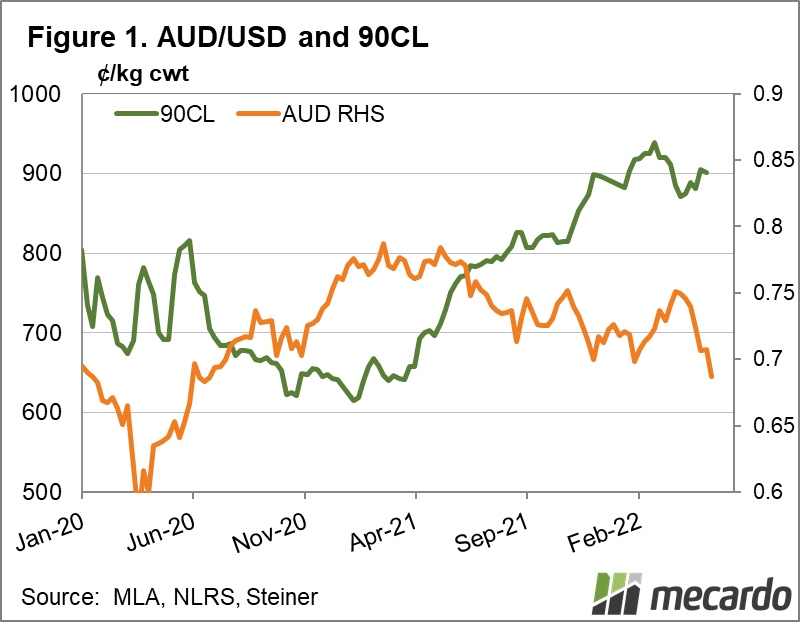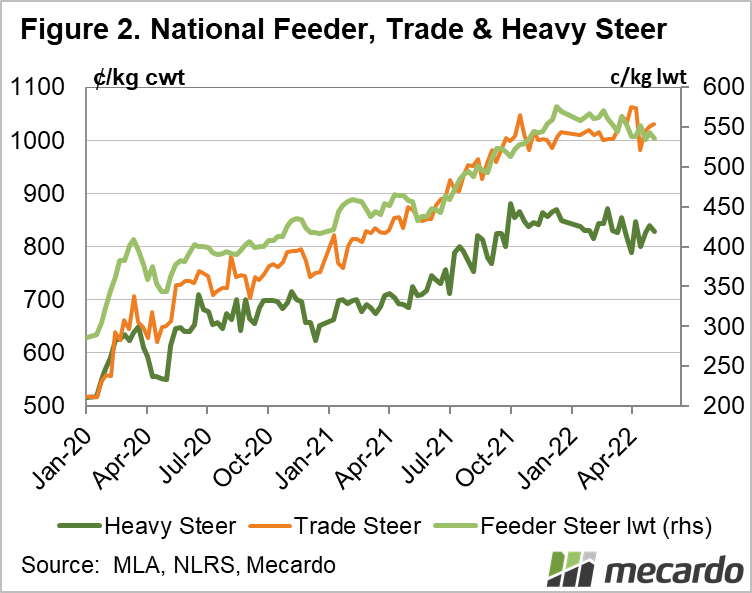Everyone in the ag business knows movements in the Australian dollar will impact commodity prices. Beef and cattle are no different, although there are forces working both for and against cattle, depending on the category. Given the recent slide in the Aussie battler, it’s a good time to have a look at the relative price impacts.
Currency exchange rates are a pretty complicated area, but the recent moves in the Aussie dollar have been relatively easily explained. The increase in interest rates here would normally see the Aussie dollar rise, as capital flowed into the country. However, the US Federal Reserve has hit their economy with bigger increases in rates, and with high inflation, there are more expected.
After a rally in February and March (figure 1), the AUD has given all that back and more, falling to nearly a two year low of 69 US¢. A falling AUD works on two of the major fundamentals of cattle markets, that being beef export values and grain prices.
Figure 1 shows that the AUD and 90CL Frozen Cow export price have a negative correlation over the last two years. That is, when the Aussie dollar rises, the 90CL falls, as it has to be cheaper to compete in export markets.
The impact on grain prices is the same, rising exchange rates see grain prices fall. There has been plenty going on in grain markets lately, with the falling AUD just one factor in rising grain values locally.
The AUD has fallen 8% from the first week in April, and all else being equal, this adds 8% to the value of export beef. We can see in figure 1 that most of the fall in the AUD has benefitted US importers, where prices have cheapened, rather than Australian exporters. If we say the full 8% is passed on to finished export cattle prices, at current cattle prices it adds $220/head to a 320kg cwt steer.
In the grain market, all else being equal (which it rarely is), an AUD 8% lower will add 8% to the value of our grain. At current prices of around $400/t, it adds $34/t. This matters as it will increase costs for lotfeeders, but not anywhere near the benefit of increased beef prices.
What does it mean?
A lower Australian dollar is generally good for cattle prices, slightly better for finished cattle than young cattle, but the move over the last six weeks has seen little benefit flowing through to beef or cattle prices. Figure 2 shows prices have been relatively steady for much of the year to date, but remain at extreme highs. A lower AUD will no doubt help to continue to support export demand, and cattle prices.
Exchange rates are just one factor in cattle prices, with seasonal conditions and overseas beef production having stronger impacts.
Have any questions or comments?
Key Points
- The Australian dollar has fallen 8% in the last six weeks which should boost beef prices.
- Much of the benefit has gone to US importers so far, with export prices already very strong.
- A falling AUD puts upward pressure on grain prices which will increase costs for lotfeeders.
Click on figure to expand
Click on figure to expand
Data sources: MLA, Steiner, Refinitiv, Mecardo



